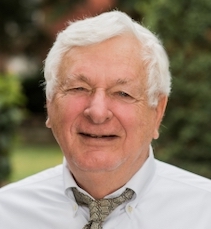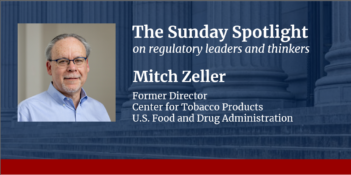
Three takeaways follow from the Supreme Court’s recent opinions ignoring Chevron v. NRDC.
Administrative law scholars are odd ducks. Although most scholars who follow the U.S. Supreme Court have recently focused their attention on issues like abortion, guns, and religion, administrative law scholars concentrated this past term on two low visibility cases—American Hospital Association v. Becerra and Becerra v. Empire Health. Both cases involved the rates at which hospitals are reimbursed for Medicare and Medicaid services.
Administrative law scholars are not really interested in how hospitals will fare after the Court’s decisions. Instead, we have turned our laser-like attention to only one issue: Will the Court continue to defer to agency actions when an agency is acting under an ambiguous law?
The Court solidified deference to agencies in a 1984 case called Chevron v. NRDC, but current conservative justices are harshly critical of the Chevron rule. In its recent decisions in American Hospital Association and Empire Health, the Court did not overrule Chevron, as some observers thought might be possible. But it did ignore Chevron.
In the Chevron case, the Court instructed circuit courts to apply a simple two-part test when reviewing an agency’s construction of a law it administers. The first question is whether the U.S. Congress has “directly spoken to the precise question at issue.” If Congress has unambiguously expressed its intent in a law, then a court and an agency must adhere to Congress’s intention.
If a court finds that Congress has “not directly addressed the precise question at issue,” a court cannot on its own impose its own understanding of the law. Instead, if a law is “silent or ambiguous” on a specific issue, the court must decide whether the agency’s action—predicated on its understanding of the law—is “based on a permissible construction of the statute.”
This Chevron doctrine has been widely applied for decades. What, then, should be made of the fact that the Court’s recent opinions in American Hospital Association and Empire Health in which the Court simply ignored Chevron?
I see three major takeaways from these decisions, presented here in the order of how confident I am in them.
First, the famous footnote nine within the Chevron opinion is alive and well. This footnote instructed judges what to do at Chevron’s first step: “If a court, employing traditional tools of statutory construction, ascertains that Congress had an intention on the precise question at issue, that intention is the law and must be given effect.”
In American Hospital Association, Justice Brett Kavanaugh wrote the opinion for a unanimous Court. The Court rejected the change that the U.S. Department of Health and Human Services (HHS) made to its method of calculating reimbursement rates for hospitals providing prescription drugs in 2018. It held that HHS could make such a change only if it first conducts “a survey of hospital acquisition costs”—which are costs that hospitals pay when obtaining prescription drugs to distribute.
After devoting five pages to detailed discussion of the Medicare law’s text—which includes critical language and competing policy implications and practical effects from different legal interpretations—Justice Kavanaugh concluded that “the traditional tools of statutory interpretation support the hospitals’ interpretation rather than the agency’s interpretation.” That language is a paraphrase of the language in footnote nine of Chevron, but Justice Kavanaugh did not cite Chevron.
In Empire Health, Justice Elana Kagan wrote the majority opinion for five Justices. She concluded that “HHS’s regulation correctly construes” the language in the Medicare law, but she did not refer to Chevron or to any of the other doctrines that grant agency deference.
Justice Kagan acknowledged that most people find confusing the Medicare law’s description of the fraction that HHS must use to calculate the rate of reimbursement of hospitals. She then wrote “when read in that suitable way, the fraction descriptions disclose a surprisingly clear meaning.” She then devoted 12 pages to a detailed discussion of the law’s language, the context in which it was used, and both the practical effects and the policy implications of alternative interpretations of the law to explain its “clear meaning.”
Justice Kavanaugh wrote a dissenting opinion on behalf of four Justices. His opinion is similar to his opinion in American Hospital Association. It is also similar to Justice Kagan’s majority opinion—except that he reaches the opposite conclusion. He stated that calculating reimbursements for hospitals is “straightforward.” He added that “this case is resolved by the most fundamental principle of statutory interpretation: Read the statute.” After considering the language of the statute, the context in which the language appears, and both the “real world effect” and the policy implications of alternative interpretations, he concluded that “HHS’s 2004 interpretation is not the best reading of this statutory reimbursement provision.”
The most obvious message that the opinions in American Hospital Association and Empire Health send is a commitment by all the justices to take seriously footnote nine in the Chevron opinion. The approach the justices took in these cases was to give effect to what the justices saw as Congress’s intention on the questions presented to the Court.
Second, another takeaway from the decisions of this past term is that Skidmore deference—as articulated in the Supreme Court’s 1944 decision in Skidmore v. Swift—has reemerged from the past as the dominant form of deference at the Supreme Court.
For decades before it issued its Chevron opinion, the Court applied the Skidmore standard with some frequency. Unlike the Chevron standard, the Skidmore standard considers an agency’s consistency in interpreting a law it administers. A court can then use the agency’s consistency to decide whether to uphold an agency’s interpretation.
The strongest evidence in support of the current vitality of Skidmore can be found in Justice Kavanaugh’s opinions. In Empire Health, Justice Kavanaugh emphasized the consistency of HHS’s interpretation of the relevant language, that is, until HHS adopted a new interpretation that he rejected in favor of what he called the “best reading” of the statute. Justice Kavanaugh stated that HHS interpreted the law the same way he did from the time it was “enacted in 1986 until 2003.”
Justice Kavanaugh made a similar point in his opinion in American Hospital Association. He emphasized there that, prior to its 2018 changed interpretation, HHS had consistently embraced the interpretation that the justice saw as the better “answer” to the question of whether HHS could vary reimbursement rates for certain prescription drugs.
Finally, my last takeaway from the Court’s recent opinions is that they are unlikely to make much difference in the way that circuit courts apply Chevron. That belief is greatly influenced by an empirical study conducted by Kent Barnett and Chris Walker. They note that the Supreme Court ignored Chevron completely in three quarters of the cases in which it would seem to apply. Thus, American Hospital Association and Empire Health are just two more of the many cases in which the Court has ignored Chevron.
Barnett and Walker then reported the results of their study of 1,330 circuit court opinions in which the lower appellate court could have applied Chevron. They found that circuit courts applied Chevron in most of those cases. They also found that circuit courts upheld agency actions at a 20 percent higher rate when they applied the Chevron standard, as opposed to the less deferential Skidmore standard. That high affirmance rate of agency decisions was attributable to the high proportion of cases where a circuit court, following the Chevron standard, first concluded that the relevant statute was ambiguous and then upheld the agency interpretation as reasonable.
The circuit courts are likely to pay no attention to the Supreme Court’s decision to ignore Chevron in American Hospital Association and Empire Medical for the same reason that they paid no attention to the scores of prior opinions in which the Court ignored Chevron. It is much easier for a judge to apply the relatively simple Chevron standard and to uphold an agency interpretation of a statute as reasonable than it is to write a lengthy opinion applying the Skidmore standard or taking footnote nine of Chevron seriously.
Circuit courts have caseloads that are many times larger than the Supreme Court’s caseload. Moreover, they do not have the option of reducing their caseload dramatically by simply reducing the number of cases they decide and the number of opinions they write. The Supreme Court has reduced its caseload by over 50 percent over the last few decades. Circuit courts cannot replicate that method of reducing their workload. Circuit courts also lack the option of deciding important cases without having to write an opinion at all—something the Supreme Court chooses to do on its “shadow docket” when it grants or denies a lower court’s decision to halt a government action.
Given their high caseloads, judges on circuit courts can only write the kinds of detailed opinions that the Justices wrote in American Hospital Association and Empire Health in a small fraction of the cases that they must decide. For them, Chevron deference could very well remain a continued basis for judicial decision-making.
I am less confident about this last expectation than I am about my other two takeaways from the Court’s recent opinions. My expectation can only be confirmed or rebutted by an empirical study of circuit court opinions that are issued after the Court’s opinions in American Hospital Association and Empire Medical. It will take a decade or more before we can have access to such a study.
This essay is part of a ten-part series entitled The Supreme Court’s 2021-2022 Regulatory Term.




